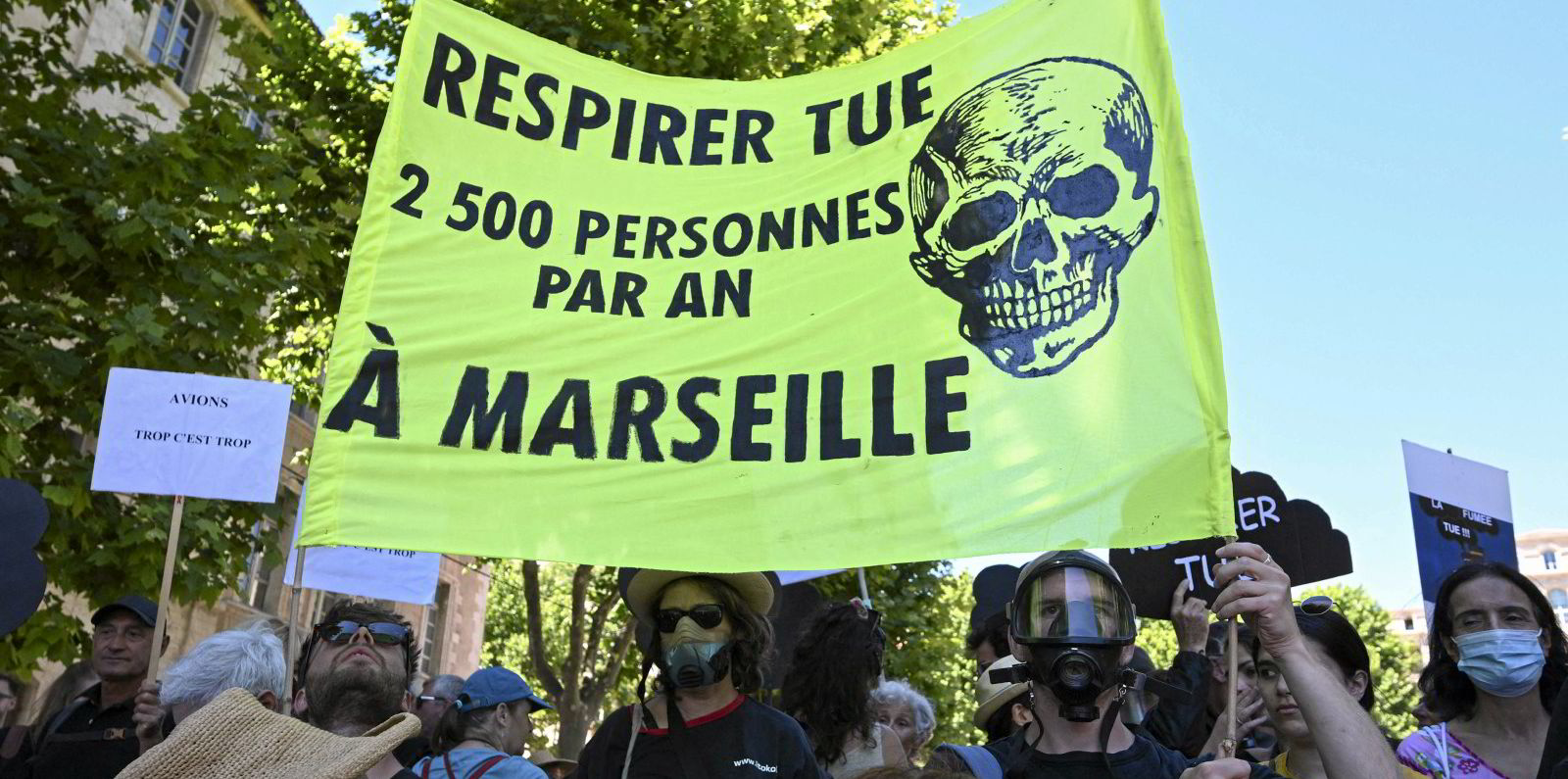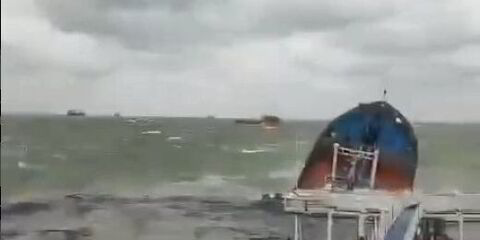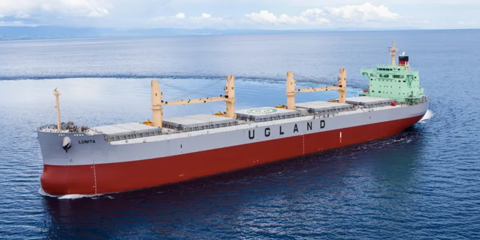Researchers and independent policy advisors remain deeply unimpressed with shipping’s key decarbonisation measures.
Their initial tepid views have not shifted much since the International Maritime Organization’s Energy Efficiency Existing Index and Carbon Intensity Indicator were first mooted.
Bryan Comer, marine programme lead at the International Council on Clean Transportation (ICCT), initially saw both measures as a step in the right direction, as they broke the IMO’s long-standing practice of regulating only new ships and ignoring existing vessels.
“But I was always sceptical about their ability to reduce emissions in the short term,” he tells TW+ .
He did not feel EEXI and CII were likely to cut emissions in the first half of the 2020s: “From there, I thought it would be possible to improve the scope, reduction rates, incentives for compliance and penalties for non-compliance.”
Comer maintains the same view today, and is looking forward to the review of EEXI and CII that is scheduled to be completed by no later than 1 January 2026.
“I see this as an opportunity to strengthen the carbon intensity reduction requirements and to expand beyond carbon dioxide to cover methane, nitrous oxide and perhaps black carbon,” he says.
Dan Hubbell, shipping emissions campaign manager at Ocean Conservancy, admits he is “disappointed” with EEXI and CII.
“The overall short-term measures package fell well short of what was needed to follow a decarbonisation trajectory for shipping in line with the [2015] Paris Agreement,” he says.
“As tools, EEXI and CII are not sharp enough to make the emissions cuts needed. The adoption of exemptions and correction factors for certain ship types or operating conditions has further muddled the level of ambition in the policy.”
Researcher Tristan Smith, reader in shipping and energy at University College London’s UCL Energy Institute, has also struggled to see the positives.
He tells TW+: “We still can’t find evidence that EEXI or CII will be particularly effective in driving change and making the important efficiency improvements and emission reductions the shipping sector needs.”
Smith argues that EEXI’s stringency is weak, and while many ships may need to do “something”, this weakness makes compliance through power or speed a “low-cost intervention”.

“CII’s also much weaker in stringency than it needed to be, and the lack of enforcement and multi-year assessment for even the low bar of action needed makes compliance through gaming an option some may choose to use, to the detriment of greenhouse gas [GHG] reduction,” he adds.
But in the longer term, are the measures enough to hit decarbonisation targets?
Comer is blunt: “Short answer: no.”
He points to a lack of penalties for CII non-compliance. “Ships that are rated a D for three consecutive years or an E in any year must make a plan of corrective actions, but there’s no guidance on what should be in those plans, and there’s never a time when a ship would have its environmental certificate revoked.
“The only risk to poorly ranked ships is that some ports may restrict access to allow only A, B or C ships, or they may charge higher port fees for D and E ships.”
The ICCT believes shipping was already on track for a 40% carbon intensity reduction by 2030, compared with the 2008 baseline, under “business as usual”.
“EEXI may help prevent backsliding, but our research has shown that while many ships will limit their engine power to comply, they are already sailing at speeds well below their maximum,” Comer says.
This means using much less than maximum engine power, so complying with EEXI will have little impact on operational speeds, fuel consumption and GHG emissions, he argues.
ICCT research estimates that EEXI will reduce CO2 emissions by only about 1% below business-as-usual emissions in 2030.
Regarding the IMO’s 2050 target of cutting emissions by at least 50% below 2008 levels, EEXI and CII do nothing to prevent increasing emissions, Comer believes.
They target carbon intensity, not absolute emissions, so if demand for shipping increases faster than efficiency improves, emissions will rise, he says.
We still can’t find evidence that EEXI or CII will be particularly effective in driving change and making the important efficiency improvements and emission reductions the shipping sector needs
Tristan Smith
ICCT analysis has shown that current EEXI targets allow emissions to continue to increase by 2030, growing about 15% from 2018 levels under a plausible emissions growth scenario from the Fourth IMO GHG Study.
“Of course, if the EEXI is strengthened in the 2026 review, then ships may be forced to further limit their maximum engine power and, at a certain point, this would drive down operational speeds,” Comer adds.
Engine power limitation will be the primary way ships comply with EEXI until it forces ships to sail at unreasonably slow speeds or it butts up against minimum power requirements for bulkers, tankers and combination carriers, he says.
“At a certain point, it could drive the uptake of zero-emission propulsion retrofits, like wind power, batteries or fuel cells, or drag-reduction retrofits like hull air lubrication. The earliest I see that happening would be in 2028 if we agree to strengthen the EEXI in 2026,” he says.
As for CII, Comer does not see this driving speed reductions at all unless major ports begin restricting access to only highly rated ships, or they start charging higher fees for poorly rated ships.
Even then, shipowners may deploy poorly rated ships to terminals without these fees.
“CII will only start driving speed reductions if penalties for non-compliance, such as revoking the ship’s environmental certificate, are included in the 2026 revision,” he says.
So what can be done in the future?
Smith’s view is: “We are far beyond the point where conversation or collaboration is sufficient if we are to avoid dangerous climate change, and progressive companies are asking for stronger regulation now they can see the pathway to decarbonise.”
He believes the “perverse incentive” of optimising the Annual Efficiency Ratio and incentivising ballast voyages has become clear to policy makers.
A revision is being considered to the IMO’s data collection system that would enable a correction to include cargo mass, he says.

“Assuming a weak response is evidenced in practice, and that the trend from shipping is for GHG emissions continuing to rise — some report they have already exceeded 2008 levels — then pressure on governments could lead to three foreseeable reactions,” Smith predicts.
There may be unilateral use of CII, with countries or ports increasing compliance pressures above those set by the IMO.
The revision and extension of CII targets could also be brought forward, with more ambitious targets and more effective enforcement and penalties.
And stronger action could be taken to incentivise a transition away from fossil fuels and achieve deep reductions in the 2030s, according to Smith. “In practice, we need all three.”
For Comer, EEXI should be improved by regulating CO2 equivalents.
He says the measure would be strongest if EEXI were based on each pollutant’s 20-year global warming potential, which would require a faster transition away from fuels that emit short-lived climate pollutants, such as methane from LNG-fuelled ships and black carbon from petroleum-fuelled ships.
As new phases of the Existing Efficiency Design Index (EEDI) are introduced, EEXI should get more stringent, according to Comer.
For example, the next phase of EEXI could apply EEDI 2025 requirements to some or all of the existing fleet.
The current EEXI standards set limits equal to or less stringent than those required for new ships built in 2022, Comer adds.
CII should be improved by regulating well-to-wake carbon dioxide equivalents, not just CO2, he says.
Scores for each ship should be published in a public database to improve transparency and allow the market to reward or punish ships.
And, Comer suggests: “There should be consequences for failing to achieve a C or better, including revoking a ship’s environmental certificate until it can demonstrate that it is back in compliance.”
The Energy Efficiency Existing Ship Index applies technical standards to cut carbon dioxide emissions by ships from 1 January 2023 based on the Energy Efficiency Design Index adopted by the IMO for newbuildings in 2020.
The Carbon Intensity Indicator (CII) will regulate existing ships above 5,000 gt from an operational perspective. It is worked out by taking a ship’s annual emissions from fuel used and dividing that by its capacity (deadweight or gross tonnage), multiplied by annual distance travelled in nautical miles.
The CII will be implemented via a new Part III of the Ship Energy Efficiency Management Plan (SEEMP) containing targets and an implementation plan that details measures to be applied.
From 2024, CII ratings will be assigned for the previous year ranging from the highest A to lowest C pass grades, while D and E results may be considered non-compliant.
Operators of ships rated D for three consecutive years or E for a single year will have to develop an approved plan of corrective actions to bring a vessel into compliance by the end of the next year.
The CII is based on 5% reduction in carbon intensity in 2023 relative to a 2019 base level. Its requirements will get stricter by 2% per year until 2026. The IMO has yet to decide on further levels.(Copyright)





